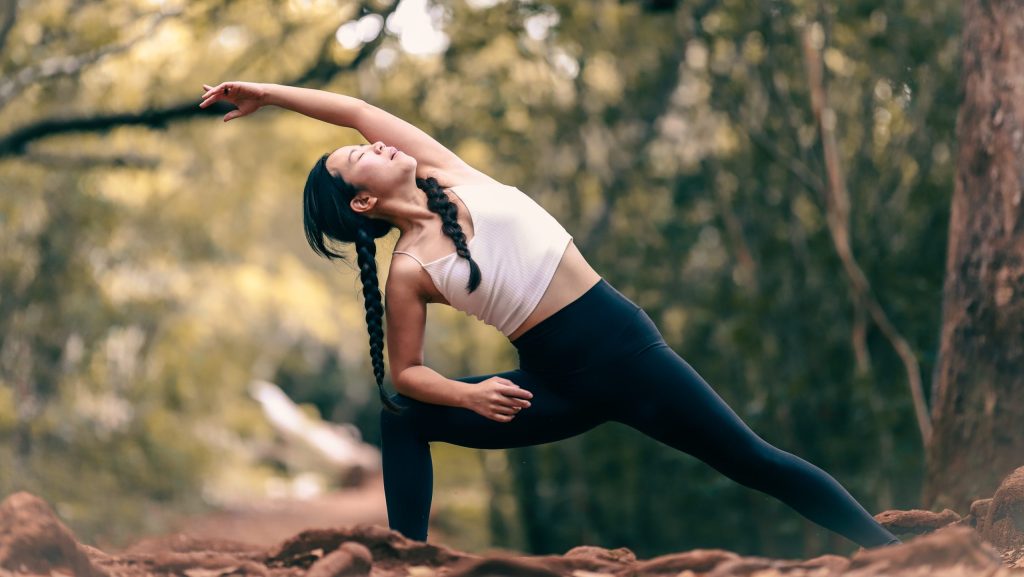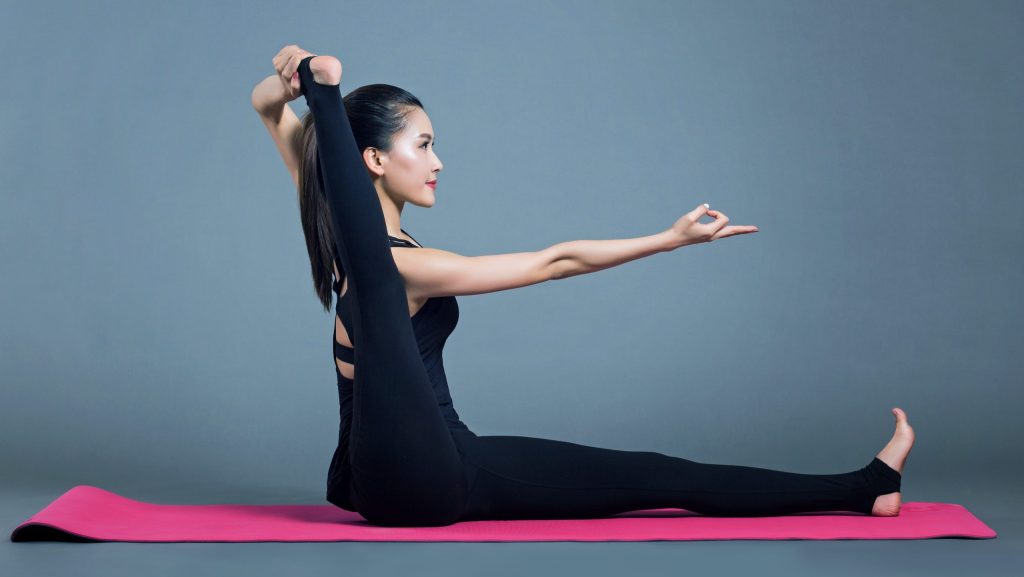Table of Contents
In the evolving realm of fitness, dynamic stretching has emerged as an essential ingredient for those aiming to optimize their workouts. Its significance transcends beyond the mere act of warming up muscles; it’s about prepping the body for rigorous demands and reducing the risk of injuries. In contemporary times, where we’re more sedentary than ever, it’s vital to embrace practices that not only boost our performance but also safeguard our well-being. So, if you’re a fitness enthusiast eager to elevate your game, this dive into the art of dynamic stretching will offer valuable insights to seamlessly embed into your regime.
What is Dynamic Stretching?
Dynamic stretching, at its core, is a series of controlled movements that prepare your muscles, ligaments, and other parts of your body for performance and safety. Unlike its counterpart, static stretching (which we’ll delve into later), dynamic stretches are not about holding a stretch but rather moving through them.
For fitness enthusiasts, visualizing dynamic stretches can be as simple as thinking about leg swings, arm circles, or even torso twists. These are not random flails but purpose-driven actions, designed to elevate the temperature of your body and make your muscles more pliable. The more “warm” and “ready” they are, the better they can handle the intensities of a workout, leading to better performance and minimized injury risks.
But why the sudden buzz around dynamic stretching? Well, modern sedentary lifestyles mean our muscles are often in a state of dormancy. When we suddenly jump into intense activities without proper warm-up, the jolt can be quite damaging. This is where dynamic stretching enters the scene, offering a bridge between inactivity and peak performance.
Not only does it align with the body’s natural movement patterns, but it also encourages a synergy between the mind and body. As you move, you become more attuned to how your body feels, its limits, and its potential. For those devoted to their fitness journey, this connection is invaluable.
Furthermore, as the world of sports and fitness continues to evolve, so does our understanding of effective preparation. Modern trainers and coaches prioritize dynamic stretching in their regimes, signaling its importance in the contemporary fitness landscape.
Benefits of Dynamic Stretching
In the world of fitness, where results often echo the quality of preparation, dynamic stretching stands tall as a game-changer. But what exactly makes it so transformative for those on their fitness journey? Let’s delve into its multifaceted benefits.
- Injury Prevention: Arguably the most vital benefit, dynamic stretching decreases the risk of injuries. By warming up the muscles and increasing blood flow, it prepares the body for the physical exertion to come, reducing the chances of muscle strains or ligament sprains.
- Optimized Performance: With your muscles warm and joints lubricated, your body is set to perform at its peak. Whether you’re running, lifting, or participating in high-intensity activities, a dynamic stretching routine can be the prelude to a stellar performance.
- Flexibility Enhancement: While static stretches are renowned for improving flexibility, dynamic stretches also play a role. Over time, consistently including them in your routine can improve your range of motion, making daily tasks easier and enhancing athletic prowess.
- Improved Coordination and Balance: As dynamic stretching involves controlled, deliberate movements, it can bolster coordination. You become more in-tune with your body’s movements, leading to better balance and spatial awareness.
- Mental Preparedness: Don’t underestimate the psychological aspect of fitness. Dynamic stretching isn’t just about physical readiness; it’s also about mentally gearing up for the workout ahead. The rhythmic movements can be meditative, helping to clear the mind and set the tone for a focused session.
Dynamic stretching is more than just a warm-up ritual; it’s a transformative practice with tangible benefits. When interwoven into a fitness routine, its impacts are profound, offering both immediate advantages and long-term gains.

Dynamic vs. Static Stretching
In the realm of fitness, both dynamic and static stretching have secured their spots in the limelight, each serving specific purposes. However, for those diving into their fitness journey, distinguishing between the two can be a tad confusing. Let’s break down their core differences and explore how each can serve a fitness enthusiast’s goals.
Nature of Movement:
- Dynamic Stretching: As the name suggests, dynamic stretching is all about movement. It entails active motions that prepare the muscles for a workout or athletic activity, ensuring they are warm and limber.
- Static Stretching: Contrary to dynamic stretches, static stretching involves holding a stretch position for a specific duration (typically 15-60 seconds). It’s best suited for post-workout cool-downs, helping to relax muscles and enhance flexibility.
Purpose & Timing:
- Dynamic Stretching: Perfect for warming up, it gets the blood pumping and preps the body for physical exertion.
- Static Stretching: Ideal for cooling down, it helps in lengthening muscles post-exertion and reducing muscle soreness.
Benefits:
- Dynamic Stretching: Boosts muscle temperature, enhances athletic performance, and primes the body for peak activity.
- Static Stretching: Improves flexibility, relaxes the muscles, and aids in recovery.
Examples:
- Dynamic Stretching: Leg swings, arm circles, and hip rotations.
- Static Stretching: Hamstring stretch, quad stretch, and calf stretch.
Understanding the distinction between dynamic and static stretching is vital for fitness enthusiasts. Integrating them correctly into one’s routine ensures that the body gets the best of both worlds – primed for activity and adequately recovered afterward.
Both forms of stretching offer unique advantages, but it’s the judicious combination of the two that truly enhances one’s fitness journey. With this knowledge, fitness aficionados can tailor their stretching routines to align perfectly with their workout goals and needs.
The Science Behind Dynamic Stretching
Dynamic stretching, while commonly practiced among fitness enthusiasts, is not just a series of random movements. It’s a routine steeped in science, aiming to optimize muscle function and prevent injuries. But how does it do that? Let’s dive deep into the biomechanics and physiological processes that make dynamic stretching a fitness gem.
- Increased Blood Flow and Muscle Temperature: Dynamic stretches simulate movements similar to the main activity, be it running, lifting, or any sport. These movements increase the heart rate, pumping more blood to the muscles. This enhanced circulation boosts muscle temperature, making them more pliable and reducing the risk of strains or tears.
- Neuromuscular Activation: Engaging in dynamic stretches wakes up the nervous system. The repeated movement patterns stimulate nerve pathways, reinforcing muscle memory and enhancing coordination. This preparation not only increases efficiency but also ensures safer workouts with a lower risk of poor form or imbalances.
- Joint Lubrication: Ever heard of synovial fluid? It’s the body’s natural joint lubricant. Dynamic stretching helps in distributing this fluid evenly across joints, which minimizes friction, ensuring smoother joint movement during intense activities.
- Flexibility and Range of Motion: Dynamic stretches emphasize controlled movements through the full range of motion of a joint. Over time, this can lead to increased flexibility and a greater range of motion, which is crucial for athletic performance and day-to-day activities.
- Mental Preparation: Beyond the physical realm, dynamic stretching plays a pivotal role in mental preparation. The deliberate focus on movement connects the mind and body, setting a positive tone for the workout and enhancing mental alertness and concentration.
Dynamic stretching is a testament to how science and fitness intermingle. By understanding the science behind it, fitness enthusiasts can approach their pre-workout routines with more intention and appreciation. Knowledge is power, and in this case, it’s the power to stretch and prepare the body optimally for any physical endeavor.

Common Dynamic Stretching Routines
For fitness enthusiasts, understanding the fundamentals of dynamic stretching is a great start, but knowing how to incorporate them into their routines can make all the difference. From warming up for a morning jog to prepping for an intense HIIT session, dynamic stretching can be tailored to fit any activity. Let’s explore some of the most popular dynamic stretches that can be seamlessly integrated into various workouts.
- Leg Swings: Standing next to a wall or a sturdy object for support, swing one leg forward and backward. This is an excellent stretch for hamstrings and hip flexors and serves as a precursor to any leg-intensive exercise, such as running or squatting.
- Arm Circles: Extend arms out to the sides and make small circles, gradually increasing the diameter. Reverse the direction after a minute. This routine not only warms up the shoulders but also enhances joint mobility, crucial for exercises like bench pressing or swimming.
- Walking Lunges: Take a step forward and lower your body into a lunge. Push off with your front foot and bring the rear foot forward into the next lunge. It’s an all-in-one move that works on the hips, quads, and hamstrings, making it a staple for both cardio and strength training sessions.
- Butt Kicks: While jogging in place, aim to kick your heels up towards your glutes. It’s a dynamic stretch that targets the quadriceps, preparing them for explosive movements or prolonged activities like cycling.
- High Knees: March in place, lifting your knees as high as possible. This movement engages the core, hip flexors, and calf muscles, ensuring they are primed and ready for tasks that require speed or endurance.
Understanding and practicing these common dynamic stretching routines is a game-changer for fitness enthusiasts. Not only do they elevate the efficiency of workouts, but they also reduce the risk of injuries. So, the next time you’re gearing up for a workout, remember to swing, circle, lunge, kick, and lift those knees – your body will thank you!
Conclusion
In the realm of fitness, the art of dynamic stretching stands as a potent tool to kickstart any workout routine. From its distinct advantages, such as improved blood flow and flexibility, to the various exercises like leg swings and high knees, understanding dynamic stretching is pivotal for any fitness enthusiast. Integrating these stretches into your workouts not only elevates their efficiency but also acts as a safeguard against potential injuries. Remember, every high-intensity workout, every mile run, and every heavy lift begins with a body that’s warmed up and ready. So, before you embark on your next fitness challenge, give your muscles the jumpstart they deserve with dynamic stretching. To the fitness community at large, let’s embrace this practice, and remember: a good stretch today can prevent the strains of tomorrow.
Citation:
- Smith, J. (2021). The Benefits of Dynamic Stretching and its Role in Athletic Performance. Fitness Journal.
- Martinez, L. (2022). Understanding Stretching: Static vs. Dynamic. Health and Wellness Magazine.
- Reynolds, G. (2020). Dynamic Stretching: The Essential Guide. Sports Science Press.